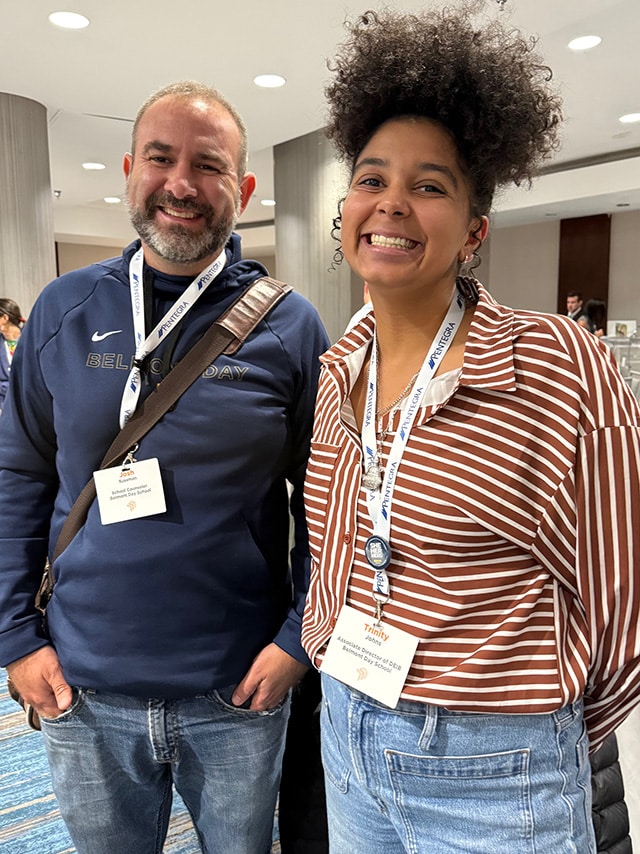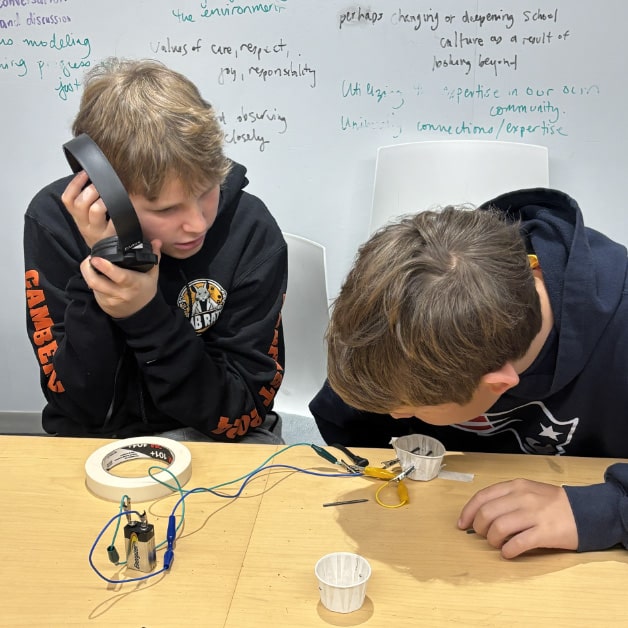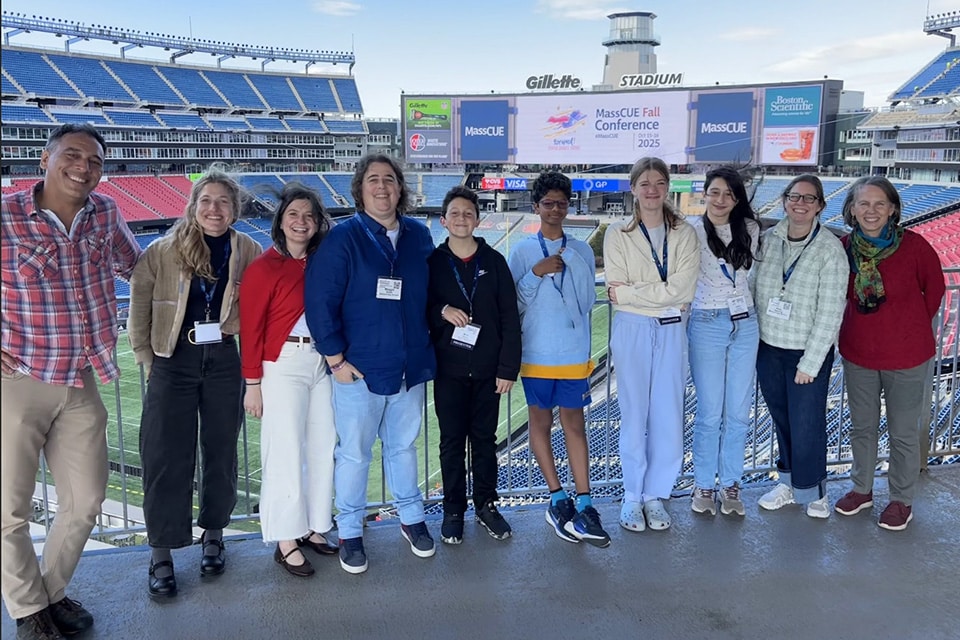As a longstanding member of the Association of Independent Schools of New England (AISNE), Belmont Day is committed to maintaining the highest standards and we embrace the shared and continuous pursuit of excellence across the independent school landscape. A core responsibility as an AISNE member is participation in the accreditation of peer schools. This fall, two faculty members, Liz Gray, middle school head, and Heather Woodcock, director of the associate teacher program, served on teams for this rigorous and fulfilling process.
The accreditation process takes place every 10 years. In advance of an accrediting team visit, schools spend a year completing a self-study document that compiles information about everything from curriculum to school governance, staffing, and admissions.
Ms. Gray and Ms. Woodcock discussed and reflected on their experiences at two schools:
Liz Gray (LG):
I visited Eaglebrook School as part of a seven-person team, which included faculty, staff, and administrators from Pike, Gordon, Park, St. Mark’s, Fayerweather, Meadowbrook, and BDS.
Heather Woodcock (HW):
I was part of a team of six teachers and administrators and we spent three days on the Fessenden School campus.
LG:
The job of the accreditation team is really to see if the school is doing what it says it’s doing and to give commendations and recommendations for the school to consider and act upon in the next five years of its development.
HW:
Our days were spent interviewing members of the Fessenden community, observing classrooms, interacting with students, faculty, and staff at meals and extracurricular activities. Our evenings were spent working with our team to write a narrative that shined a light on what we felt Fessenden was doing well and areas that we thought would benefit from attention.
LG:
Monday and Tuesday were spent on campus from about 7:30 a.m. to 6:30 p.m. and then we had dinner and met as a team to plan for the next day and do some draft writing of the report. On Wednesday, the team reconvened to finalize and vote on the AISNE major standards that the school is required to pass in order to be in good standing for accreditation.
HW:
For me, interacting with colleagues both on my team and at Fessenden was generative and allowed for both a deep dive into another school culture and community and also a chance to pull back and consider the school as a whole.
LG:
Being a part of this process opens your eyes to various partners in the world of education, gives you new perspectives on how other schools run their program. Inevitably, there are casual discussions with your team as you investigate your host school like, “How do faculty meetings run?”, “What’s your discipline policy?”, or “How do teachers document curriculum?” And everyone weighs in with their different iterations of how they function.
One of my favorite takeaways is observing student and faculty cultures at different schools–it is fascinating! There are so many ways to run a school and educate students, and I love picking up new amazing ideas from the places I visit.
HW:
Yes, you gain perspective on one’s own school by witnessing so closely how another school approaches the work of teaching, supporting, and preparing students. There are so many ways to teach and learn, and I am so grateful to work in a field that values self-reflection and evolution!
LG:
By volunteering for an accreditation team I feel that I am doing my part for AISNE to make sure that schools, including Belmont Day, can undergo a healthy and regular review and evaluation process. Without these teams, accreditation would not be nearly as productive.



